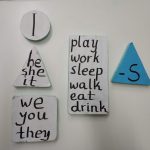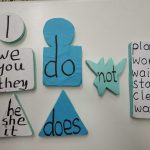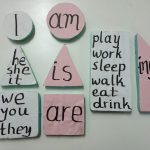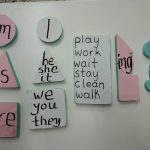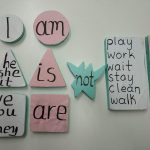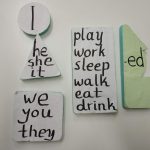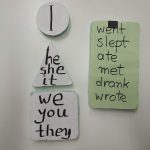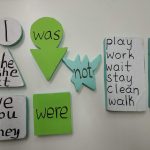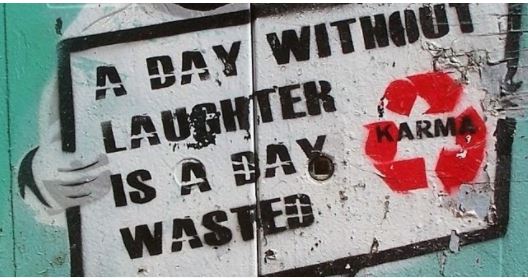Following the advice of my fellow teacher (now a pensioner!) Evi K., I created this imaginative way to help students remember the 4 basic tenses of the English Language, namely the Simple Present, the Present Continuous, the Simple Past and the the Past Continuous.
The implementation of the plan is quite easy: you need a large flat piece of Styrofoam, some pieces of paper, some adhesive magnetic rolls, and, of course, a large magnetic board, coupled with some patience and skill in cutting the Styrofoam to the desired patterns.
The rationale behind the craft is to help students visualise the formation of some of the most basic tenses, namely the Simple Present, the Present Continuous, the Simple Past and the Past Continuous. Students, especially those who are strong in visual-spatial intelligence (cf. Gardner’s Theory of Multiple Intelligences) will be able to recognize patterns easily and, thus, memorise the tenses.
The use of certain shapes also helps towards the memorisation of the conjugation of verbs in those tenses (for example the triangle of the third singular person helps students associate it with the –s ending).
Have a look:
- Simple Present affirmative
- Simple Present interrogative
- Simple Present negative
- Present Continuous affirmative
- Present Continuous interrogative
- Present Continuous negative
- Simple Past affirmative, regular verbs
- Simple Past affirmative, irregular verbs
- Simple Past interrogative, regular verbs
- Simple Past interrogative, irregular verbs
- Past Continuous negative

